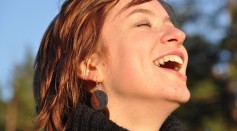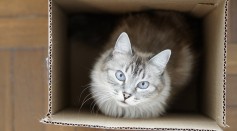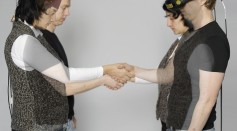perception

Human Brain May Be Biased in Perceiving Sounds When Heard From the Left Side, Study Reveals

Food Psychology: Color of Dishware Can Trick the Brain Into How a Food Would Taste
Viral Dress 2015 Trends Again; Is It Blue & Black or White & Gold? Color Perception Explained

Mother Claims Seeing Figure of Jesus in Pith of Clementine; When Does Pareidolia Occur? Is It Normal?

Pandemic Has Changed the Way People Perceive Time: Physical Distancing, Memories of Intense Feelings Seemingly Slow Down Days

Bias Tells Who Looks Alike: Perception of Face Identity Influenced by Prior Knowledge of Personalities

Paradoxical Relationship: New Study Shows Link Between Intensity of Emotions and How Others Perceive It

Why Do Cats Love to Sit on Squares, Even on Imaginary Ones?

Depression Alters Processing of Visual Information According to Study

Are There 11 or 17 Colors in This Picture? Science Explains Confusing Optical Illusion

What Would Happen if You and A Friend Swapped Bodies?
Optogenetics in Visual Perception Trickery
#DressGate Continues-What Researchers Are Saying About the Social Media Phenom
Most Popular

How a Plant-Based Diet Can Protect Against Breast Cancer: Insights from Nutrition Research

Study Reveals High Turnover in Scientific Research Careers: What This Means for Future Scientists

Practical Steps to Future-Proof Your Money to Create Financial Security

How Technology Is Changing the Real Estate Industry?





